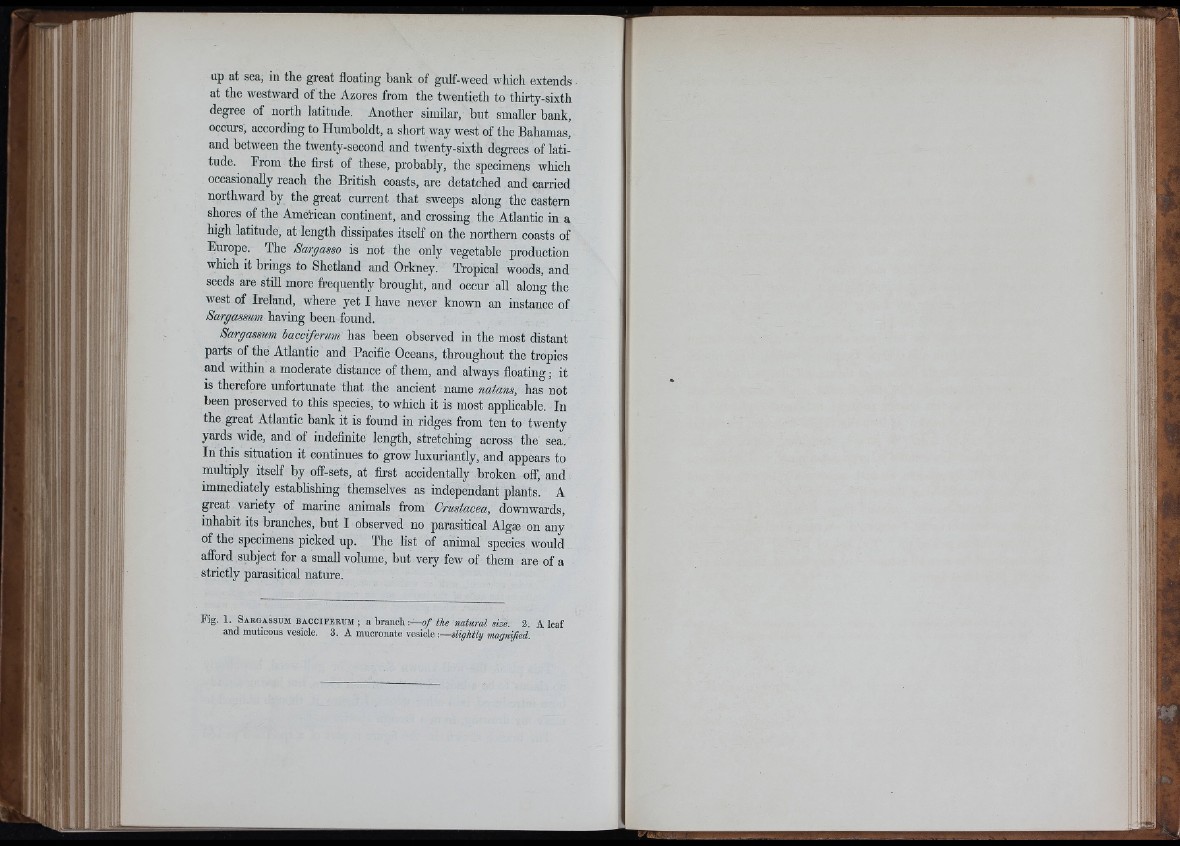
tit:
il:: U 'i
ili.
up at sea, in the great floating bank of gulf-weed which extends
at the westward of the Azores from the twentieth to thirty-sixth
degree of north latitude. Another similar, but smaller bank,
occurs, according to Humboldt, a short way west of the Bahamas,
and between the twenty-second and twenty-sixth degrees of latitude.
From the first of these, probably, the specimens which
occasionally reach the British coasts, are detatched and carried
northward by the great current that sweeps along the eastern
shores of the American continent, and crossing the Atlantic in a
high latitude, at length dissipates itself on the northern coasts of
Europe. The Sargasso is not the only vegetable production
which it brings to Shetland and Orkney. Tropical woods, and
seeds are still more frequently brought, and occur all along the
west of Ireland, where yet I have never known an instance of
Sargassum having been found.
Sargassum bacciferum has been observed in the most distant
parts of the Atlantic and Pacific Oceans, throughout the tropics
and within a moderate distance of them, and always floating ; it
is therefore unfortunate that the ancient name natans, has not
been preserved to this species, to which it is most applicable. In
the great Atlantic bank it is found in ridges from ten to twenty
yards wide, and of indefinite length, stretching across the sea.
In this situation it continues to grow luxuriantly, and appears to
multiply itself by off-sets, at first accidentally broken off, and
immediately establishing themselves as independant plants. A
great variety of marine animals from Crustacea, downwards,
inhabit its branches, but I observed no parasitical Algæ on any
of the specimens picked up. The list of animal species would
afford subject for a small volume, but very few of them are of a
strictly parasitical nature.
Fig. 1. Sargassum bacciferum; a branch:—» / the natural size. 2. A leaf
and muticous vesicle. 3. A mucronate vesicle ■.— slightly magnified.
m